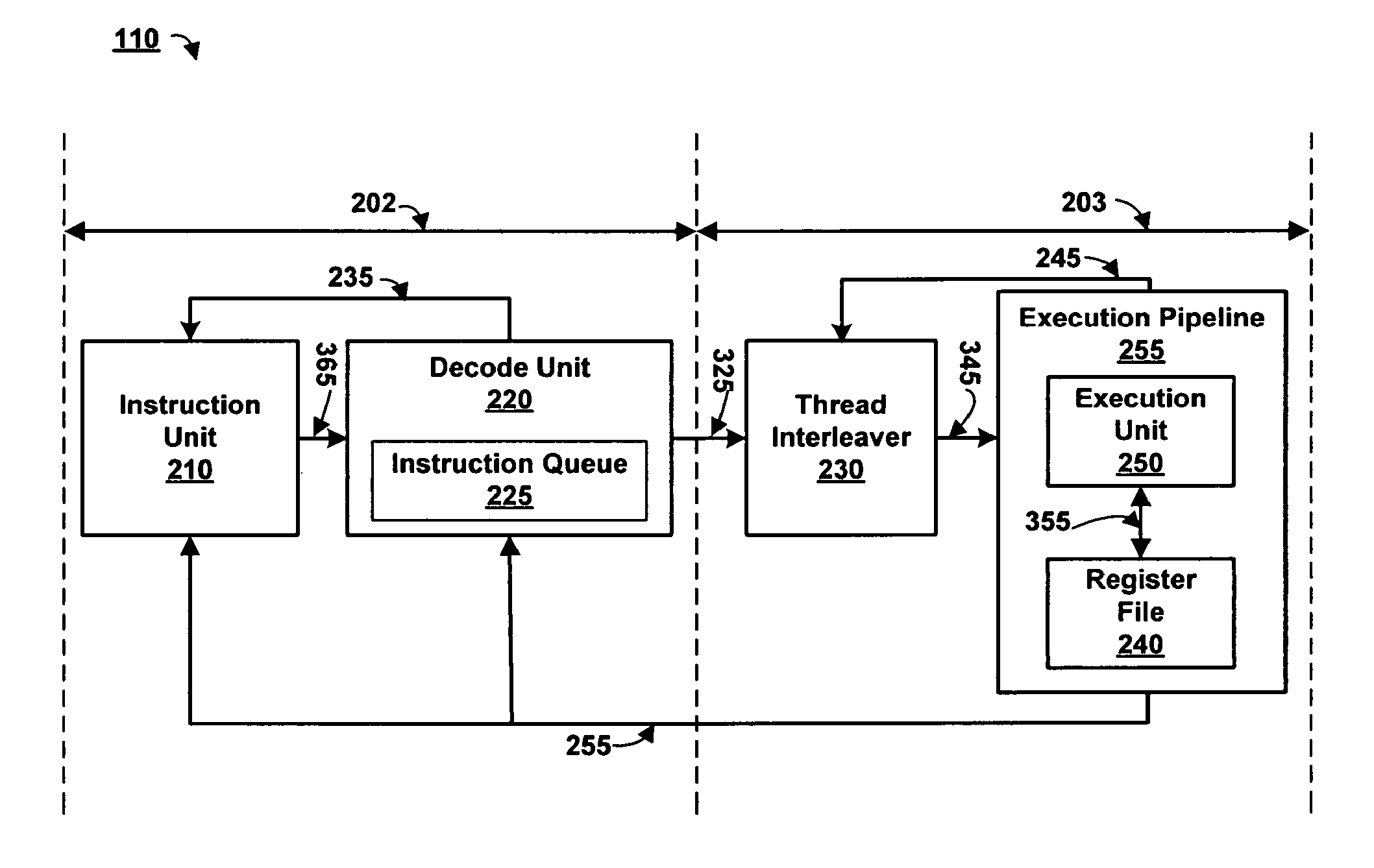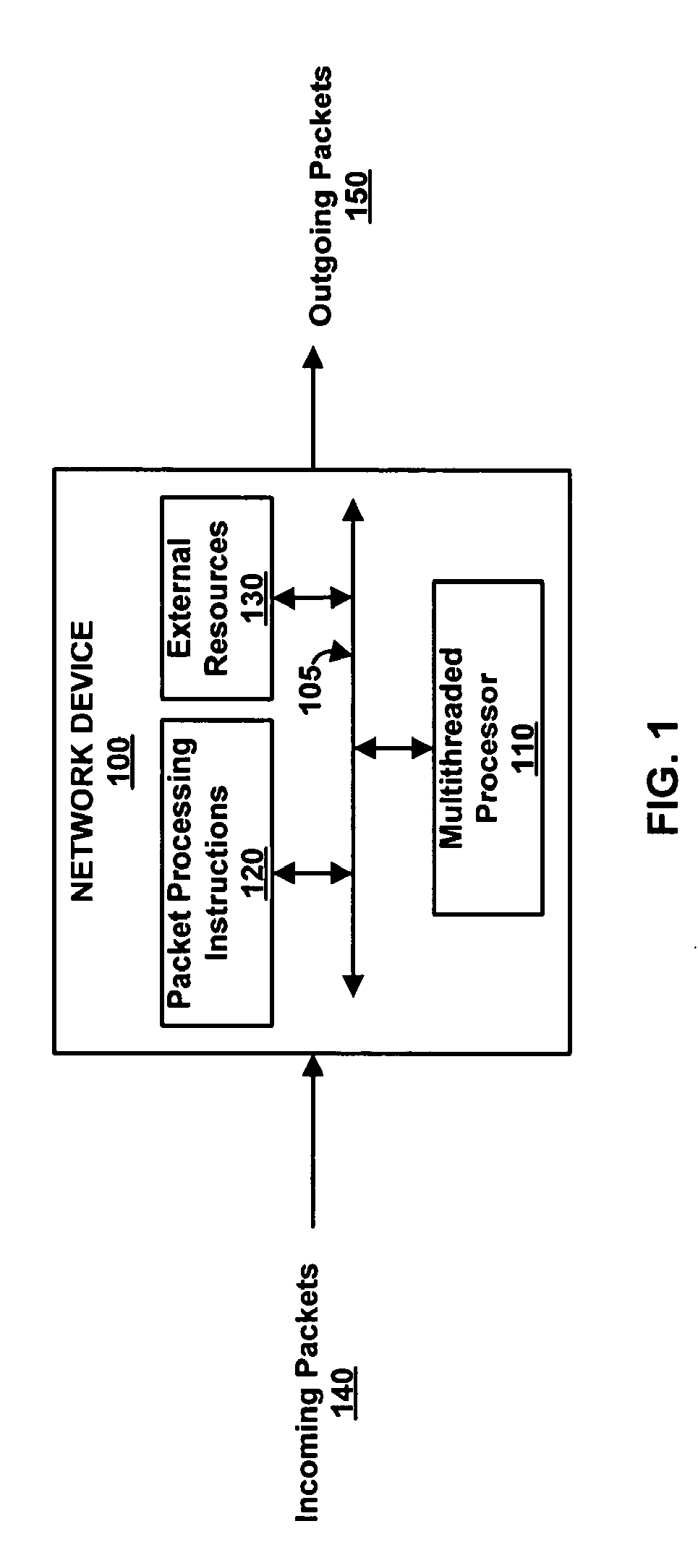Thread interleaving in a multithreaded embedded processor
a multi-threaded embedded processor and processor technology, applied in multi-programming arrangements, instruments, computation using denominational number representation, etc., can solve the problems of high-bandwidth network technology operating at data rate 2 that exposes limitations within conventional computer processors, and high-end network devices using state-of-the-art general purpose processors are unable to meet the demands of networks with data rate of 2 , to achieve the effect of increasing processor utilization, high performance and increasing processor utilization
- Summary
- Abstract
- Description
- Claims
- Application Information
AI Technical Summary
Benefits of technology
Problems solved by technology
Method used
Image
Examples
first embodiment
[0029]The lower pipeline 203 comprises a thread interleaver 230 coupled by a signal line 345 to an execution pipeline 255. The execution pipeline 255 further comprises an execution unit 250 coupled by a signal line 355 to a register file 240. An input of the thread interleaver 230 forms the input of the lower pipeline 203. In the lower pipeline 203, the thread interleaver 230 determines a thread execution sequence independent of the instruction fetch sequence. The instruction fetch sequence is thus capable of being resequenced relative to the thread execution sequence as shown and discussed below with reference to FIG. 6C. The thread execution sequence (or thread interleave sequence) organizes instructions sent to the execution unit 250 in an order that is optimized for high utilization of the multithreaded processor 110. Example instruction fetch sequences and thread execution sequences are illustrated and discussed below with reference to FIG. 6B.
[0030]The instruction unit 210 fet...
second embodiment
[0045]FIG. 4 is a block diagram illustrating the thread interleaver 230 according to the present invention. The selection unit 310 further comprises a high priority unit 420, a low priority unit 430, and a control mux 440. Inputs of the high and low priority units 420, 430 receive thread conditions 335 via signal line 245. One or more bits or bit vectors represent data on signal line 245 as shown in FIG. 6A. Both the high priority unit 420 and the low priority unit 430 are coupled to receive the instruction conditions from signal line 325. The signal line 325 can also be a plurality of signal lines associated with a head of queue instruction from different threads. The instruction conditions include an external priority, and a state of each head of queue instruction, among other things. External priority can be set by a programmer or automatically by a program for code optimizations, by the packet processing application 120 during critical periods, by the instruction unit 210 respon...
PUM
 Login to View More
Login to View More Abstract
Description
Claims
Application Information
 Login to View More
Login to View More - R&D
- Intellectual Property
- Life Sciences
- Materials
- Tech Scout
- Unparalleled Data Quality
- Higher Quality Content
- 60% Fewer Hallucinations
Browse by: Latest US Patents, China's latest patents, Technical Efficacy Thesaurus, Application Domain, Technology Topic, Popular Technical Reports.
© 2025 PatSnap. All rights reserved.Legal|Privacy policy|Modern Slavery Act Transparency Statement|Sitemap|About US| Contact US: help@patsnap.com



